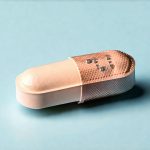Postpartum changes are profoundly impactful, extending far beyond the immediate joy of welcoming a new baby. While much attention is rightly given to recovery from childbirth itself – the healing perineum, hormonal shifts, and emotional wellbeing – there’s often less discussion about the subtle but significant changes that occur in the pelvic floor and bladder function. Many women experience involuntary urine leakage (incontinence) or an urgent need to urinate after giving birth, issues stemming directly from the strain of pregnancy and delivery. These aren’t simply “part of being a mom” – they’re physiological realities often linked to weakened pelvic floor muscles and altered bladder control mechanisms that can be addressed with appropriate support and understanding.
The good news is that most postpartum bladder concerns are treatable, and many resolve over time with targeted interventions. However, the landscape of potential “interventions” can be confusing, particularly when it comes to medications marketed for relaxation or stress relief that sometimes have unintended consequences on bladder function. This article delves into the use of certain drugs – primarily those with anticholinergic properties – in postpartum women experiencing pelvic floor dysfunction and aims to provide a comprehensive overview of their potential effects, risks, and alternative approaches. It’s crucial to understand that this is an area requiring careful consideration and discussion with healthcare professionals; self-treating is never recommended.
Understanding Anticholinergics and Bladder Function
Anticholinergic medications are commonly prescribed for conditions like overactive bladder (OAB), allergies, asthma, and even motion sickness. They work by blocking acetylcholine, a neurotransmitter that plays a key role in muscle contractions. While this can be beneficial in reducing spasms or allergic reactions, it also impacts the detrusor muscle – the smooth muscle of the bladder responsible for contraction during urination. By relaxing the detrusor muscle, anticholinergics can reduce urinary urgency and frequency. However, this same mechanism is what creates potential issues when used postpartum, especially without a thorough understanding of an individual’s pelvic floor health.
The postpartum period presents unique challenges regarding bladder function. Pregnancy itself puts significant pressure on the bladder and pelvic floor muscles. Delivery – whether vaginal or cesarean – can further weaken these structures and potentially damage nerves involved in bladder control. Many women, therefore, experience temporary urinary incontinence or urgency even without underlying OAB. Using anticholinergics in this context might mask symptoms without addressing the root cause – weakened pelvic floor muscles – and could even hinder natural recovery processes. Furthermore, some commonly used postpartum medications (like antihistamines for allergies) already have mild anticholinergic effects, potentially compounding the issue if additional drugs are introduced.
It’s important to recognize that stress urinary incontinence (SUI), which is leakage during activities like coughing, sneezing, or exercise, and urge urinary incontinence (UUI), characterized by a sudden strong urge to urinate followed by involuntary leakage, have different underlying mechanisms. Anticholinergics are primarily designed for UUI; they’re generally not the first-line treatment for SUI, which often requires pelvic floor muscle training. Postpartum incontinence is frequently a mix of both types and requires careful assessment to determine the appropriate course of action.
The Risks of Postpartum Anticholinergic Use
The use of anticholinergics postpartum isn’t without potential risks – both short-term and long-term. Beyond the direct impact on bladder function, these medications can have a range of side effects, including:
- Dry mouth
- Constipation
- Blurred vision
- Dizziness
- Cognitive impairment (especially in older adults, but even younger individuals may experience some degree of cognitive slowing)
These side effects themselves can be problematic for new mothers who are already dealing with fatigue and hormonal changes. However, more concerning is the potential for long-term consequences related to pelvic floor health. Prolonged use of anticholinergics can further weaken the detrusor muscle over time, leading to detrusor weakness and potentially making it harder to empty the bladder completely. This can increase the risk of urinary retention and other complications.
Furthermore, there’s growing evidence linking chronic anticholinergic use to an increased risk of dementia later in life. While more research is needed, this association raises significant concerns about long-term medication usage, particularly for conditions where alternative treatments are available. For postpartum women, who may be prescribed these medications for relatively minor bladder issues that often resolve with conservative management, the potential risks might outweigh the benefits. It’s vital to discuss these risks openly with your doctor and explore all available options before starting any anticholinergic medication.
Alternatives to Medication: A Holistic Approach
Fortunately, there are numerous non-pharmacological approaches to managing postpartum bladder dysfunction that should be explored before considering medications. These include:
- Pelvic Floor Muscle Training (PFMT): Often referred to as Kegel exercises, PFMT involves strengthening the muscles of the pelvic floor. This is considered the first-line treatment for stress urinary incontinence and can also help with urge incontinence. A qualified physical therapist specializing in pelvic health can provide personalized guidance on proper technique and exercise progression.
- Bladder Training: This technique involves gradually increasing the intervals between urination to retrain the bladder to hold more urine. It’s particularly helpful for urge incontinence.
- Lifestyle Modifications: Simple changes like reducing caffeine and alcohol intake, staying well-hydrated (but not overhydrated), managing constipation, and maintaining a healthy weight can significantly improve bladder control.
- Pelvic Health Physical Therapy: A comprehensive assessment by a pelvic health physical therapist can identify specific muscle imbalances or dysfunctions contributing to bladder problems and guide tailored treatment plans including manual therapy, exercise, and education.
These approaches are generally safe, effective, and avoid the potential side effects associated with medications. They also address the underlying cause of the problem – weakened pelvic floor muscles – rather than simply masking the symptoms. Prioritizing these conservative treatments is essential before considering any pharmacological intervention.
Navigating Postpartum Recovery & Seeking Support
Postpartum recovery isn’t a linear process; it takes time, patience, and often, professional guidance. Many women feel hesitant to discuss bladder issues with their doctors due to embarrassment or the misconception that it’s a normal part of motherhood. However, open communication is crucial. Don’t hesitate to bring up your concerns during routine postpartum checkups or schedule an appointment specifically to address pelvic floor health.
Remember that you’re not alone and there are resources available to support you:
- Pelvic Health Physical Therapists: These specialists can provide individualized assessment, treatment, and education regarding pelvic floor dysfunction.
- Urogynecologists: Physicians specializing in female pelvic medicine and reconstructive surgery can diagnose and treat complex bladder and pelvic floor disorders.
- Postpartum Support Groups: Connecting with other new mothers who are experiencing similar challenges can provide emotional support and valuable insights.
- Online Resources: Websites of reputable medical organizations (e.g., the American Urogynecologic Society) offer reliable information about postpartum bladder health.
Ultimately, making informed decisions about your health requires a collaborative approach between you and your healthcare team. By understanding the potential risks and benefits of different treatment options – including medications – and prioritizing conservative management strategies whenever possible, you can navigate postpartum recovery with confidence and restore optimal bladder function. It’s about empowering yourself with knowledge and advocating for the care you deserve, ensuring both physical wellbeing and a positive experience as a new mother.





















